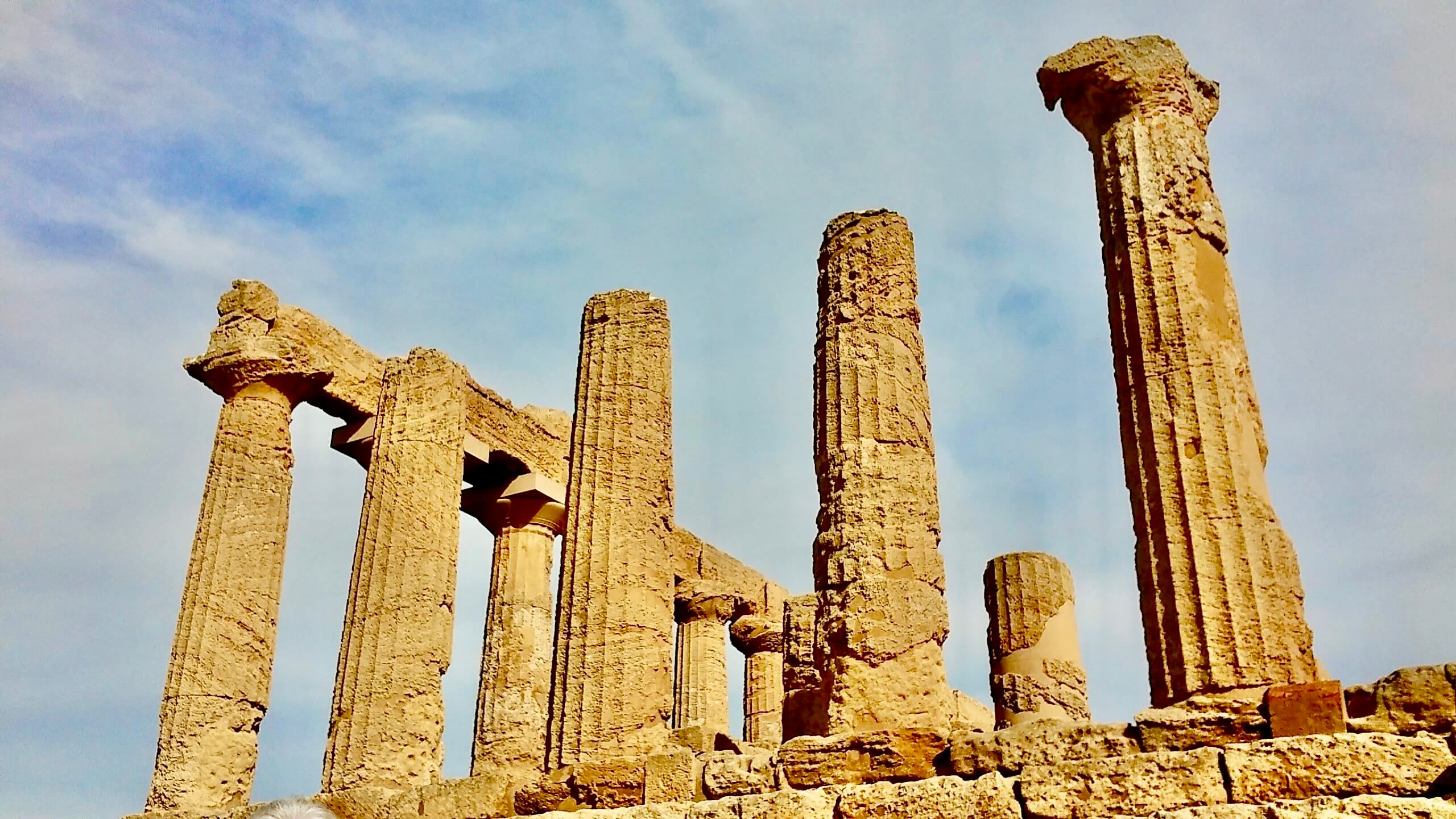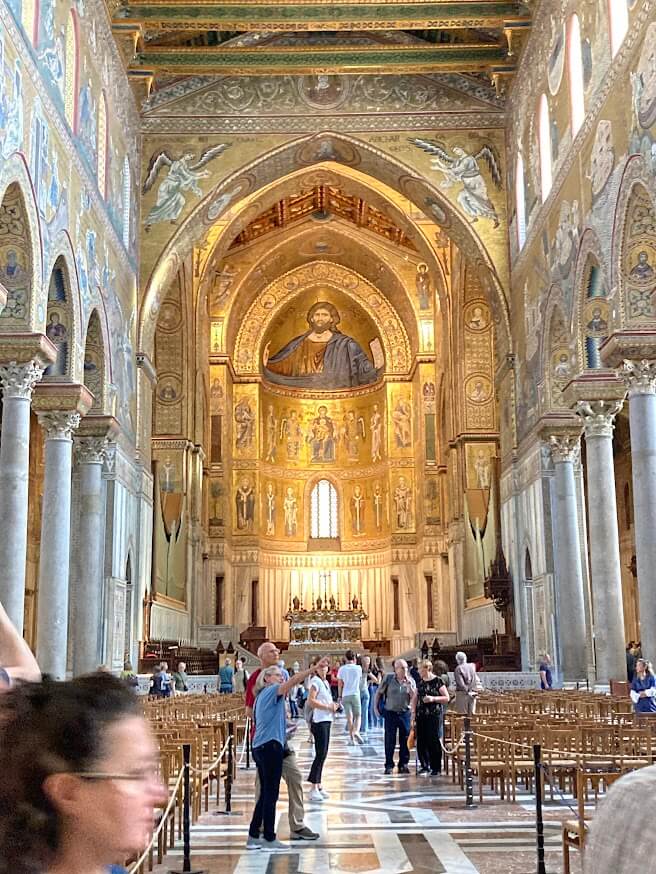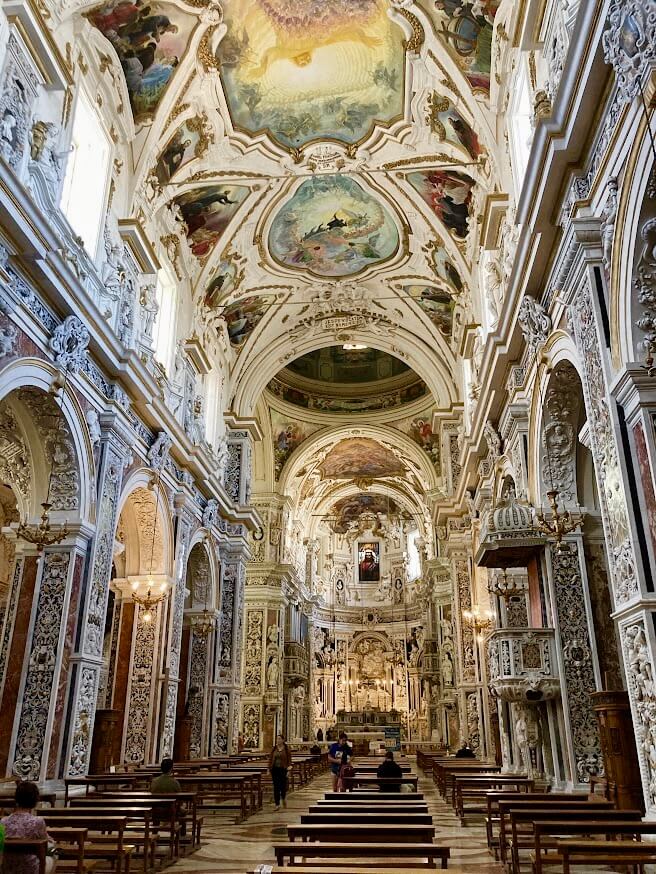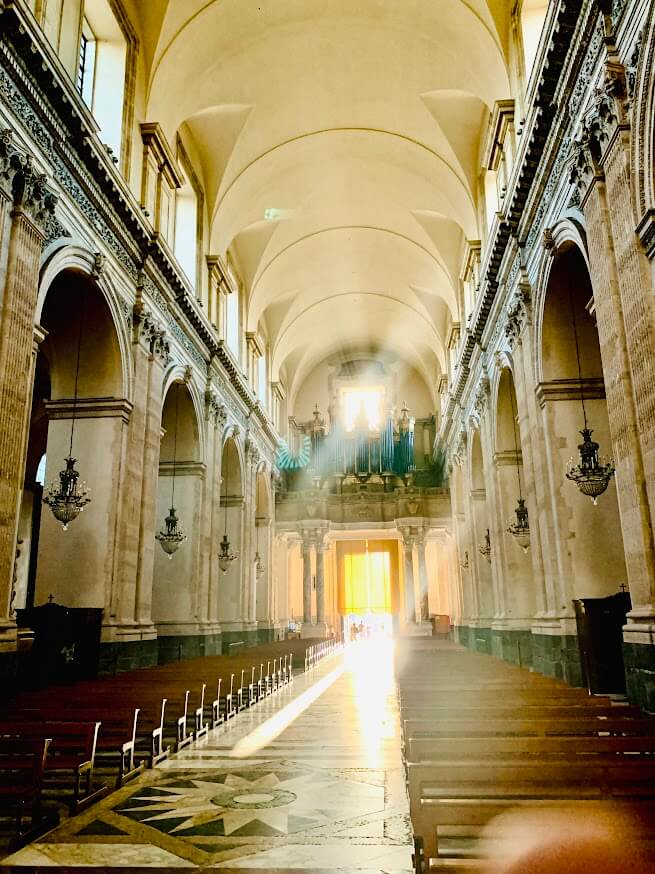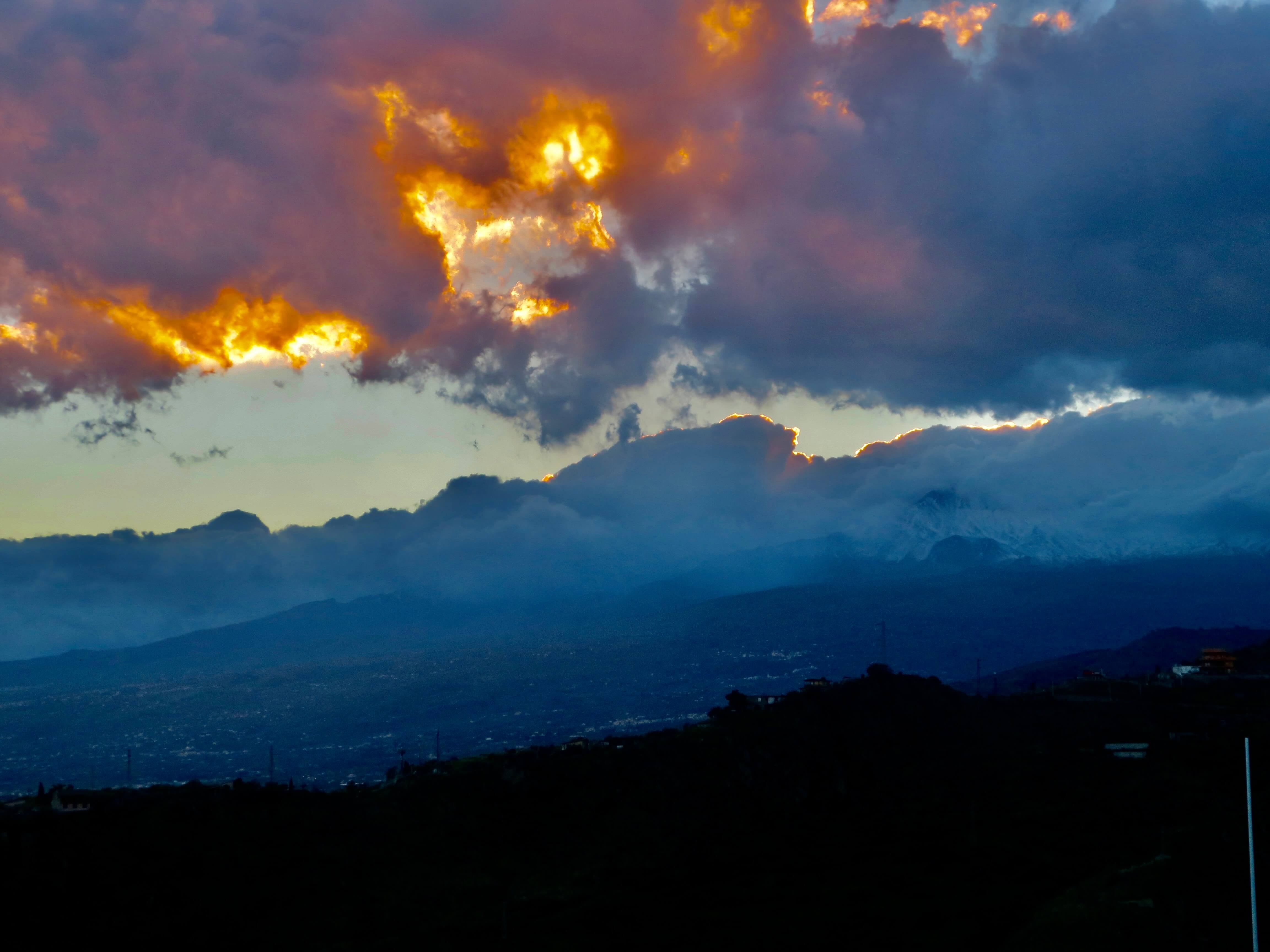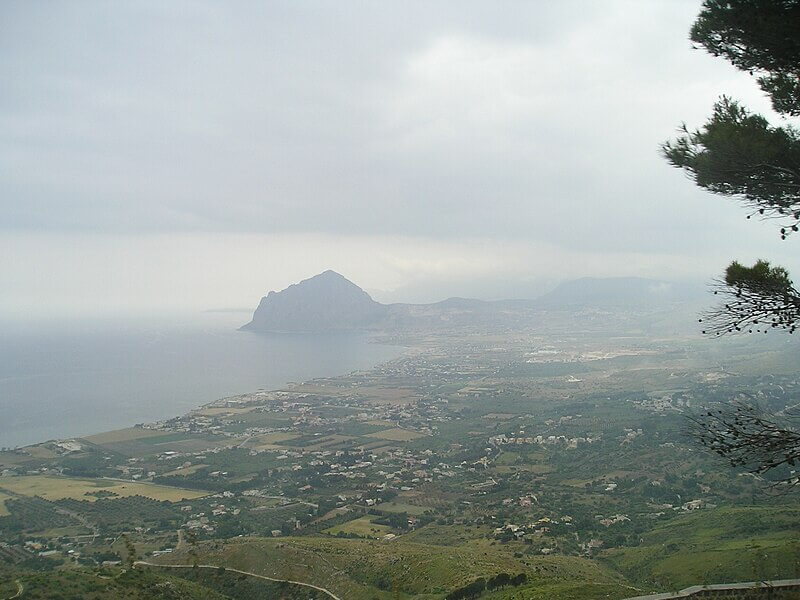- Home
- Sicilian Culture
- Religion
Standing on the Crossroads of Faith and Culture: Religion in Sicily
Sicily has a wealthy cultural heritage in the heart of the Mediterranean. Stunning landscapes, ancient ruins, and vibrant cuisine have captivated visitors since ancient times. However, the one thing that really sets this island apart from the rest of the Western world is the intersection of faith and culture that permeates Sicilian life.
Under the watchful gaze of the majestic Mount Etna, Sicily proudly displays a diverse religious landscape, a testament to its centuries-old history. From the Greek Temples of Agrigento to the Byzantine mosaics of Monreale, the island is adorned with religious sites, each narrating its unique story.
The deep-rooted faith of the Sicilian people comes alive in a vibrant display of celebrations and religious processions that fill the streets of its towns throughout the year, creating an atmosphere of excitement and anticipation.
This article will explore the religion in Sicily, delving into the customs, traditions, and religious practices that have shaped the island's identity.
Join us as we unveil the hidden gems of Sicily's spiritual heritage and discover how faith has always been an integral part of its cultural tapestry.
History of Religion in Sicily
The history of religion in Sicily is a tapestry woven with the threads of various civilizations that have inhabited the island over millennia.
Initially influenced by the ancient Greeks, who established colonies in Sicily around the 8th century BCE, the island became a center for worshiping numerous deities, including the Olympian gods.
Temples dedicated to Zeus, Athena, and other gods dotted the landscape, most notably in the Valley of the Temples in Agrigento. The ruins continue to testify to the island's rich Hellenic heritage.
In retrospect, the Greek influence laid the groundwork for a syncretic approach to spirituality that would evolve through subsequent conquests.
With the arrival of the Romans in the 3rd century BCE, the religious landscape began to shift. First, the Romans integrated their pantheon with the Greeks. Then, during the late Roman Empire, as Christianity began to spread, the island saw the establishment of early Christian communities.
The martyrdom of Saint Agatha in Catania, one of Sicily's patron saints, is one example of the early Christian devotion that took root during this period. The same goes for Syracuse's Saint Lucia—another example of early Christian faith from an era when it was uncommon to devote one's life to such a new thing.
By the 5th century, Christianity had become dominant, and the earlier novelty had become a general custom. This led to the decline of earlier pagan practices.
But things weren't stable for long. The subsequent Arab conquest in the 9th century introduced Islam to Sicily, creating a unique blend of cultures and faiths, including the adoption of Arabic language and architectural styles and the preservation of Greek and Roman knowledge.
In the Middle Ages, Arabs had established a rich intellectual tradition, promoting learning and the arts as part of their religion. This tradition, which included advancements in mathematics, astronomy, and medicine, also started to influence local customs and practices in Sicily.
The Islamic period lasted over two centuries, leaving an indelible mark on Sicilian culture, including language and architecture.
The Normans, who followed the Arabs in the 11th century, further diversified the religious landscape by promoting Catholic Christianity while allowing for coexistence with Muslim and Jewish communities. This era saw the birth of another Sicilian saint, Rosalia, which later became the patron saint of Palermo.
This historical interplay of faiths has made Sicily a microcosm of religious pluralism, inviting us to appreciate its cultural heritage based on tolerance and cooperation.
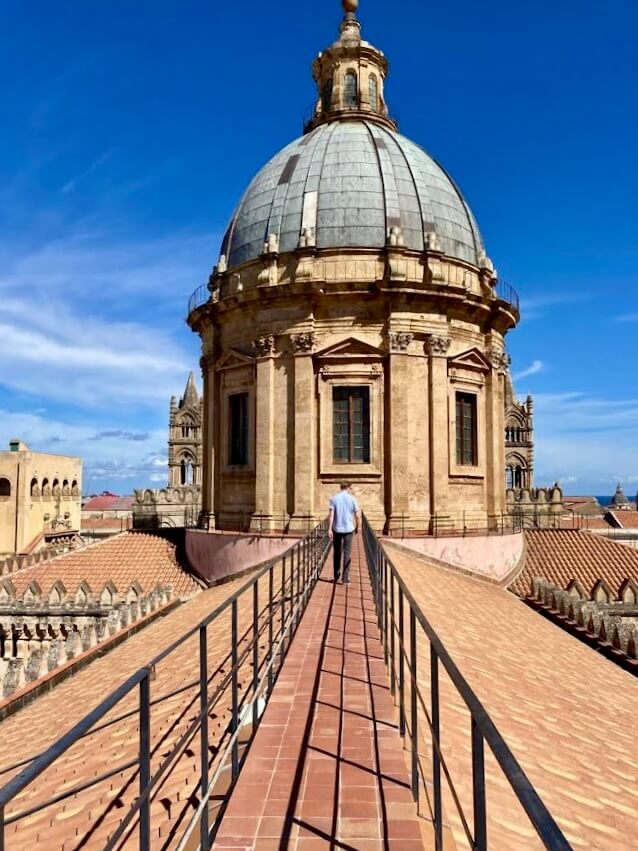 On top of the Palermo Cathedral. Before the cathedral, the city's principal mosque was on the site.
On top of the Palermo Cathedral. Before the cathedral, the city's principal mosque was on the site.Religious Festivals and Celebrations in Sicily
Religious festivals and celebrations are vibrant expressions of religion in Sicily. They unite communities and showcase the island's rich cultural heritage.
One of the most renowned festivals is the Feast of Saint Agatha, celebrated in early February in Catania. This event honors the city's patron saint with spectacular processions, elaborate offerings, and a palpable sense of devotion.
Thousands of locals and visitors participate, carrying the saint's relics through the streets adorned with flowers and candles, creating a breathtaking spectacle.
Another significant celebration is the Feast of Saint Rosalia, held in Palermo each July.
This festival commemorates Palermo's patron saint and features a week-long series of events, including concerts, street performances, and, most notably, the grand procession of the a beautifully decorated float bearing the statue of Saint Rosalia.
The event culminates in a spectacular fireworks display, symbolizing the city's liberation from the plague in 1625, for which the saint is believed to have interceded.
The Carnival of Sciacca is yet another fascinating example of a religious celebration intertwined with local culture.
While Carnival is celebrated throughout Italy, the Sciacca version is noted for its unique blend of pagan and Christian elements. The festivities include elaborate parades featuring colorful floats, music, and dancing, all set against the backdrop of ancient traditions.
Influence of Religion on Art and Architecture in Sicily
The influence of religion on art and architecture in Sicily is profoundly evident in the island's landscape, where sacred structures and artistic masterpieces are found. The majestic Norman cathedrals, such as the Cathedral of Monreale, are prime examples of this influence.
Built in the 12th century, the cathedral is renowned for its breathtaking mosaics depicting biblical scenes, crafted with a level of artistry that continues to astound visitors. These mosaics serve a religious purpose and reflect the cultural syncretism of the time, incorporating Byzantine, Arab, and Latin artistic elements into a cohesive whole.
Additionally, the Baroque period flourished religious architecture in Sicily, characterized by grandiose churches adorned with intricate stuccoes and elaborate frescoes. The Church of the Gesù in Palermo exemplifies this style, with its ornate interior and dramatic use of light and shadow that creates an atmosphere of divine transcendence.
Religious Pilgrimage Sites in Sicily
Sicily has numerous religious pilgrimage sites that attract devotees and visitors seeking spiritual renewal and cultural enrichment. One of the most significant is the Sanctuary of Saint Rosalia on Mount Pellegrino, located just outside Palermo.
This site is revered as the resting place of the city's patron saint, and each year, thousands of pilgrims ascend the mountain to pay homage. The sanctuary blends natural beauty and religious significance with stunning views overlooking the city.
Another vital pilgrimage site is the Cathedral of Saint Agatha in Catania, where the relics of the beloved saint are housed. Pilgrims flock to this cathedral, especially during the Feast of Saint Agatha, to seek her intercession and partake in the festivities surrounding her life.
The cathedral's magnificent architecture and the devotion exhibited by the attendees create an atmosphere of reverence and communal spirit.
In addition to these prominent sites, smaller shrines and chapels scattered throughout the island also serve as essential pilgrimage destinations. Many of these locations are dedicated to local saints or miraculous events, drawing visitors who seek solace and inspiration.
The Role of Religion in Sicilian Society and Daily Life
Religion plays a central role in the daily lives of many Sicilians, influencing their values, customs, and social interactions. For many, faith is both a private matter and a communal experience that shapes their identity and relationships with others.
Religious symbols, such as crucifixes and saint statues, can be found in homes, shops, and public spaces, reflecting the pervasive nature of spirituality in Sicilian culture. This visibility of faith often serves as a source of comfort and belonging, reinforcing a collective identity rooted in shared beliefs and traditions.
Daily life in Sicily is often punctuated by religious rituals and practices that create a rhythm of devotion. From morning prayers to the observance of saints' feast days, these practices provide a framework for understanding and navigating life.
Conclusion: The Enduring Legacy Religion in Sicily
The intersection of faith and culture in Sicily is a rich and multifaceted phenomenon that has evolved over centuries, profoundly shaping the island's identity. From its ancient religious practices to contemporary expressions of spirituality, the legacy of faith continues to influence many aspects of Sicilian life.
The architectural wonders of cathedrals, the culinary delights tied to religious observances, and the communal celebrations of saints are all manifestations of Sicily's deep-rooted connection between faith and culture. This intricate relationship enriches the island's heritage and fosters a sense of belonging and identity among its people.
Ultimately, religion in Sicily offers valuable lessons in tolerance, coexistence, and the importance of community. As the island continues to navigate the complexities of modern life, the enduring legacy of its spiritual heritage remains a guiding force, reminding us of the power of faith to inspire, unite, and enrich the human experience.
Whether through the lens of history, art, cuisine, or daily life, the influence of religion on Sicilian culture continues to captivate and inspire all who encounter it.
Related:
Saint Agatha - The Patron Saint of Catania
Saint Rosalia - The Patron Saint of Palermo
Sicilian Culture: A Journey Through History, Culture, and Cuisine
History of Sicily: From Ancient Times to Modern Day
The Emirate of Sicily: The Rise and Fall of Arab Rule in Sicily
Norman Conquest of Sicily: An Epic Tale of Power, Intrigue, and Cultural Fusion
(This page last edited: January 14, 2025)
Recent Articles
-
Sicily Weather Around the Year
Apr 22, 25 01:34 PM
Sicily weather around the year. What to expect, when and where. -
History of Sicilian Mafia: From its Origins to the Present
Apr 22, 25 01:33 PM
History of Sicilian Mafia: Discover the secrets behind this notorious criminal organization. -
Sicilian Wines: Flavors to Delight Your Senses
Apr 22, 25 01:32 PM
Sicilian wines will leave a lasting impression. Join us as we uncork the secrets of this remarkable region!
Follow MANY FACES OF SICILY on Facebook, Instagram, Bluesky & Pinterest
Contact: vesa@manyfacesofsicily.com
